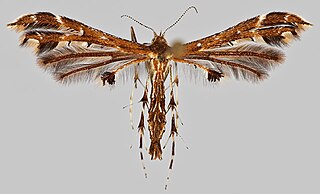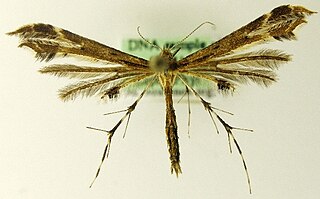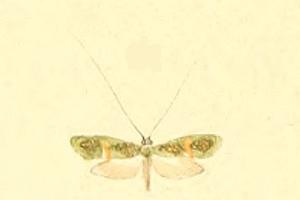
Hieracium , known by the common name hawkweed and classically as hierakion, is a genus of flowering plant in the family Asteraceae, and closely related to dandelion (Taraxacum), chicory (Cichorium), prickly lettuce (Lactuca) and sow thistle (Sonchus), which are part of the tribe Cichorieae. Hawkweeds, with their 10,000+ recorded species and subspecies, do their part to make Asteraceae the second largest family of flowering plants. Some botanists group all these species or subspecies into approximately 800 accepted species, while others prefer to accept several thousand species. Since most hawkweeds reproduce exclusively asexually by means of seeds that are genetically identical to their mother plant, clones or populations that consist of genetically identical plants are formed and some botanists prefer to accept these clones as good species whereas others try to group them into a few hundred more broadly defined species. What is here treated as the single genus Hieracium is now treated by most European experts as two different genera, Hieracium and Pilosella, with species such as Hieracium pilosella, Hieracium floribundum and Hieracium aurantiacum referred to the latter genus. Many members of the genus Pilosella reproduce both by stolons and by seeds, whereas true Hieracium species reproduce only by seeds. In Pilosella, many individual plants are capable of forming both normal sexual and asexual (apomictic) seeds, whereas individual plants of Hieracium only produce one kind of seeds. Another difference is that all species of Pilosella have leaves with smooth (entire) margins whereas most species of Hieracium have distinctly dentate to deeply cut or divided leaves.
A dry roadside dotted with small, ¾ inch red orange flowers, interspersed with very similar yellow ones, and often the white of daisies, is a good sign that you are in Hawkweed country.

The Pterophoridae or plume moths are a family of Lepidoptera with unusually modified wings. Though they belong to the Apoditrysia like the larger moths and the butterflies, unlike these they are tiny and were formerly included among the assemblage called "microlepidoptera".

Hellinsia osteodactyla is a moth of the family Pterophoridae. It is found in most of Europe, as well as North Africa and from Asia Minor to Japan. Also known as the small golden-rod plume it was first described by Philipp Christoph Zeller in 1841.

Hellinsia tephradactyla is a moth of the family Pterophoridae found in most of Europe. It was first described by the German taxonomist Jacob Hübner in 1813.

Oxyptilus ericetorum is a moth of the family Pterophoridae. It is found in most of Europe, east to Siberia.

Hellinsia is a genus of moths in the family Pterophoridae. It was created by J.W. Tutt in honour of the entomologist John Hellins.

Hellinsia lienigianus is a moth of the family Pterophoridae which inhabits coastal areas, dry pastures and waste ground and is found in Africa, Asia, Australia and Europe. Also known as the mugwort plume it was first described by Philipp Christoph Zeller in 1852.

Oxyptilus pilosellae is a moth of the family Pterophoridae first described by Philipp Christoph Zeller in 1841. It is found in most of Europe, east to Russia and Asia Minor. It was released as a biological control agent for Hieracium in New Zealand in 1998.

Oxyptilus parvidactyla, also known as the small plume, is a moth of the family Pterophoridae found in Africa, Asia and Europe. It was first described by Adrian Hardy Haworth in 1811.

Hellinsia carphodactyla is a moth of the family Pterophoridae, first described by Jacob Hübner in 1813. It is known from most of Europe, Asia Minor and North Africa.

Crombrugghia tristis is a moth of the family Pterophoridae. It is found in most of Europe, except the Benelux, Great Britain, Ireland and Scandinavia. It is also known from southern Siberia, Asia Minor and central Asia. The habitat consists of sandy areas overgrown with Hieracium.

Oxyptilus chrysodactyla is a moth of the family Pterophoridae. It is found in most of Europe, except most of the Balkan Peninsula, Great Britain, Ireland and Portugal.

Hellinsia pectodactylus is a moth of the family Pterophoridae. It is found in Europe, the Canary Islands, Kyrgyzstan, Afghanistan, India and North America.
Hellinsia inulae is a moth of the family Pterophoridae. It is found on the Canary Islands, Iberian Peninsula, Corsica, Sardinia, Sicily, Cyprus and in Germany, Austria, Italy, the Czech Republic, Poland, Slovakia, Hungary, Croatia, Romania, Bulgaria, Bosnia and Herzegovina, North Macedonia, Greece, Russia, North Africa and Asia Minor.

Hellinsia inquinatus is a moth of the family Pterophoridae. It is found in North America, including Florida, Mississippi, Oklahoma, Tennessee, Maryland, Alabama, Texas, Missouri, Colorado and Arizona. It has also been recorded from Hispaniola, Mexico, Puerto Rico and St. Thomas Island.
Hellinsia chlorias, the chlorias plume moth, is a moth of the family Pterophoridae. It is found in the United States, including Mississippi, New York, Colorado and Kentucky.

Nemophora dumerilella is a moth of the Adelidae family. It is found in most of Europe, except Ireland, Great Britain, the Netherlands, Portugal, Italy, Slovenia, Croatia, Lithuania, Latvia, Estonia, Finland and Norway.

Celypha rurestrana, the hawkweed marble, is a moth of the family Tortricidae. It was described by Philogène Auguste Joseph Duponchel in 1843. It is found in most of Europe, except Ireland, Lithuania, Ukraine and the western part of the Balkan Peninsula. It is also found in Turkey.
Scythris laminella is a moth of the family Scythrididae. It was described by Michael Denis and Ignaz Schiffermüller in 1775. It is found in most of Europe and Central Asia.
















